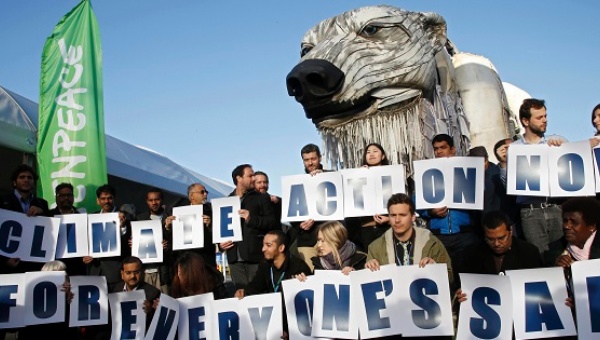- Advertisement -

Under Paris climate pact, countries agreed on several critical components of climate action, such as:
- Mitigation Objectives and Plans (Articles 2 and 4): The text includes a new stretch goal of keeping warming below 1.5 degrees Celsius to accompany the current hard limit of 2 degrees. Countries will pursue the mitigation plans laid out in their domestic climate commitments, which will go into effect in 2020 (also in Decision Section II and Section III, Paragraphs 22-41).
- Long-Term Goal (Article 4): The overall aim specified in the agreement is to peak global greenhouse gas emissions as soon as possible and undertake rapid reductions so as to achieve a balance between emissions by anthropogenic sources and removals by sinks of greenhouse gases in the second half of the century. The specificity of this long term goal is such that, when coupled with the goal of limiting warming to 2˚C, countries would be de facto required to completely decarbonise the global electric sector by 2050, according to the IPCC.
- Ratchet Mechanism (Article 14): The COP Decision established that a global stocktake will take place in 2018, where countries will regroup to assess and potentially adjust their national commitments (COP Decision Section II, Paragraph 20). Countries agreed to reevaluate their commitments every five years, starting in 2023, in order to get stronger action on the table and to adjust for global changes, like the falling prices of renewables and increasing climate impacts.
- Transparency and Compliance (Articles 13 and 15): The “sunshine” provisions of this text require all countries to report on mitigation actions and support, both given and received. All countries will participate in the same system of measuring, reporting and verification of emissions, and all will be measured against the same standards: “good practice methodologies accepted by the Intergovernmental Panel on Climate Change.” The transparency system will be flexible regarding the scope and detail of developing country reporting, as long as it meets the minimum standards of the IPCC. In addition, all but the poorest and smallest countries must report at least every two years. For verification, the agreement sets up a single verification system: technical expert review. The agreement both mandates and promotes compliance to the various provisions.
- Adaptation (Article 7): Developed countries will provide financial and technological support to help developing countries adapt to impacts of climate change, building resilience and preventing further damage (also in COP Decision Section III, Paragraphs 42-47).
- Loss and Damage (Article 8): The Paris Agreement includes a section directing countries to create a special process to address the losses and damage that stems from unavoidable climate impacts which overwhelm the limits of adaptation (e.g. sea level rise), as well as follow the procedures laid out in the Warsaw Mechanism. The COP Decision explicitly excludes liability or compensation for losses and damages (COP Decision Section III, Paragraph 52)
- Finance (Article 9): The COP Decision text reiterates a global finance pledge with a floor of $100 billion per year in climate financing from developed countries by 2020 (Section III, Paragraph 54), and expands the donor pool post-2020 to encourage other countries to voluntarily provide additional financial support (Article 9.2). Countries have agreed to set a new global, collective climate finance goal for 2025 that increases upon the $100 billion target for 2020 (COP Decision Section III, Paragraph 54).
